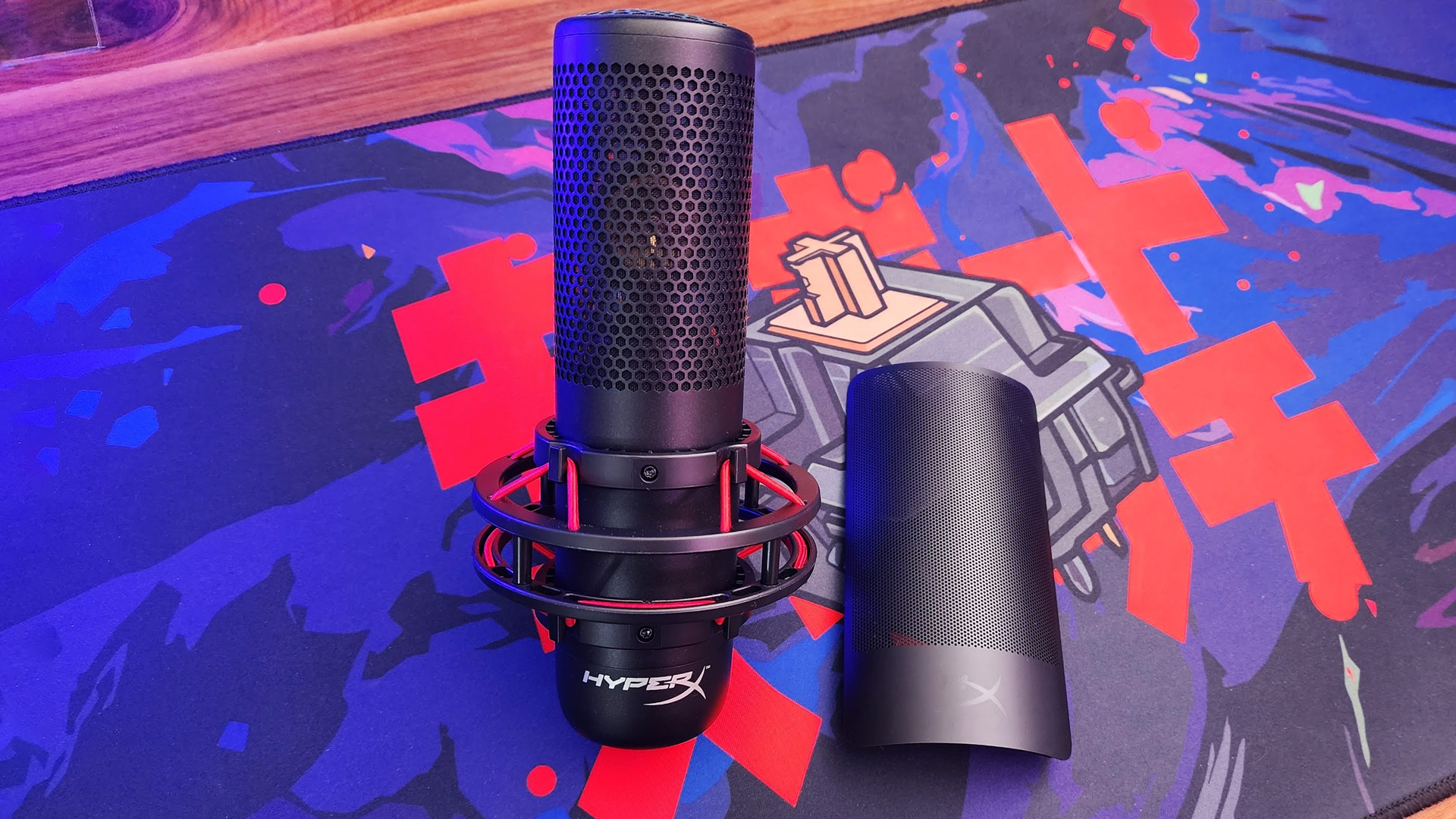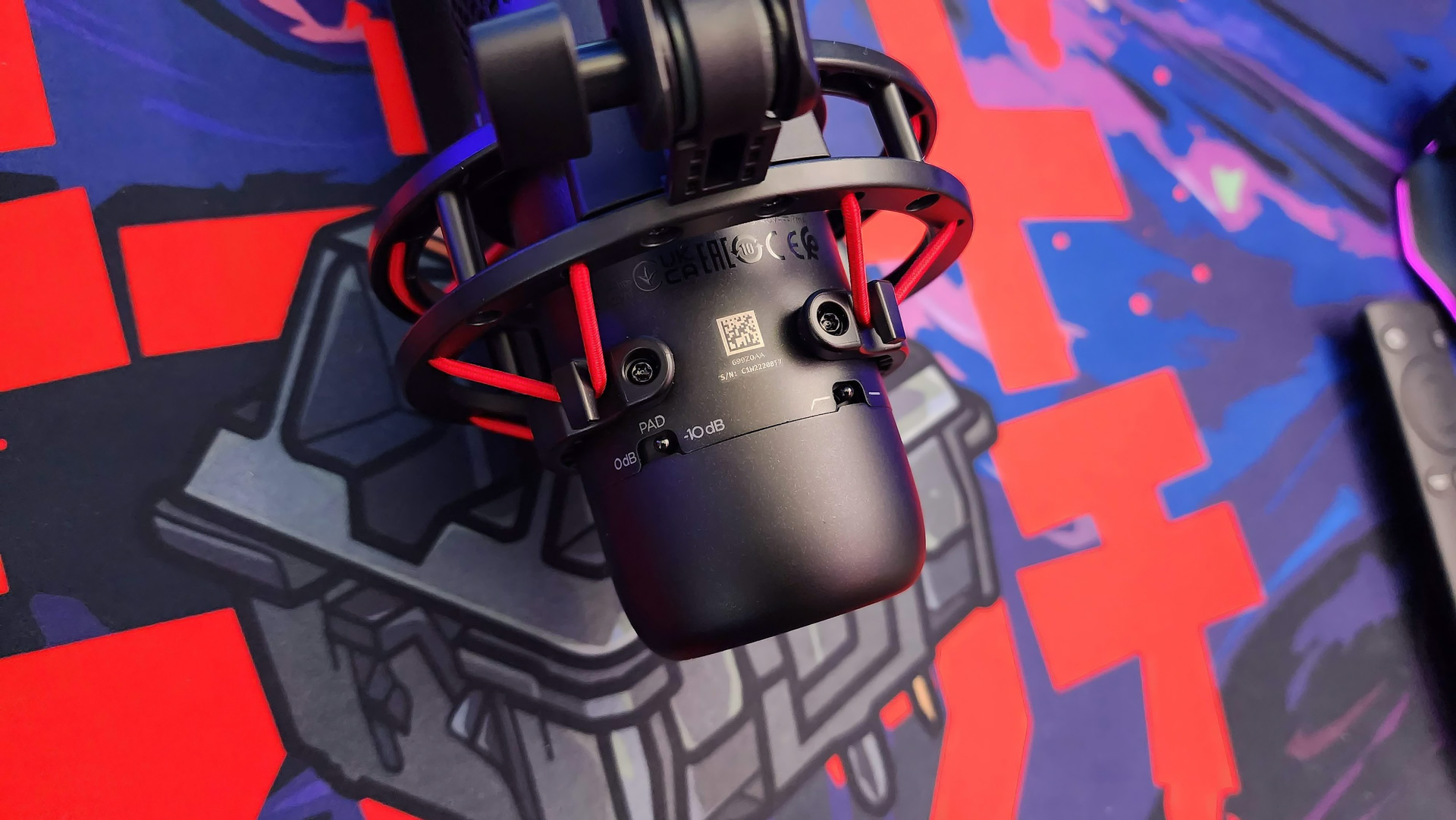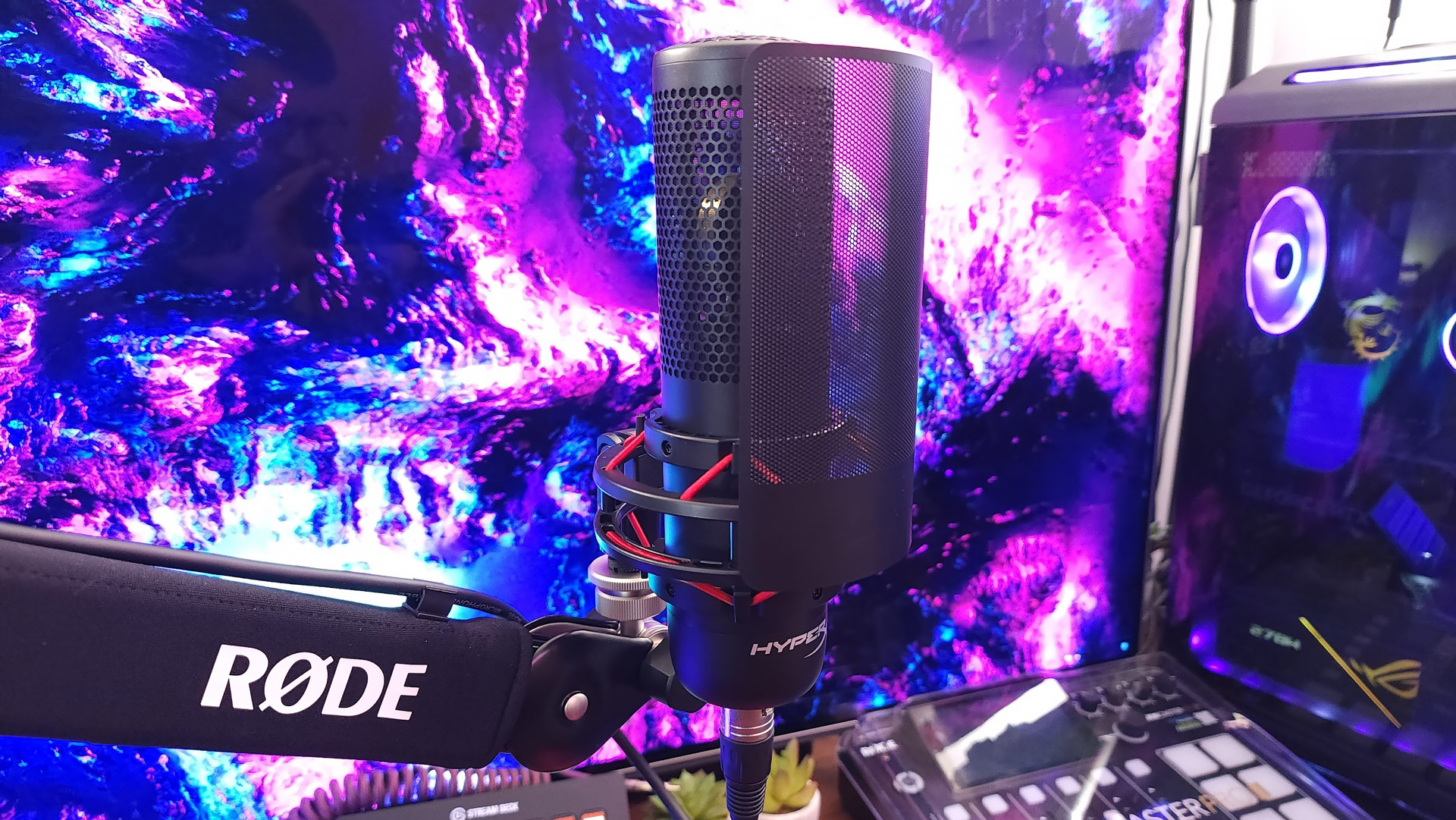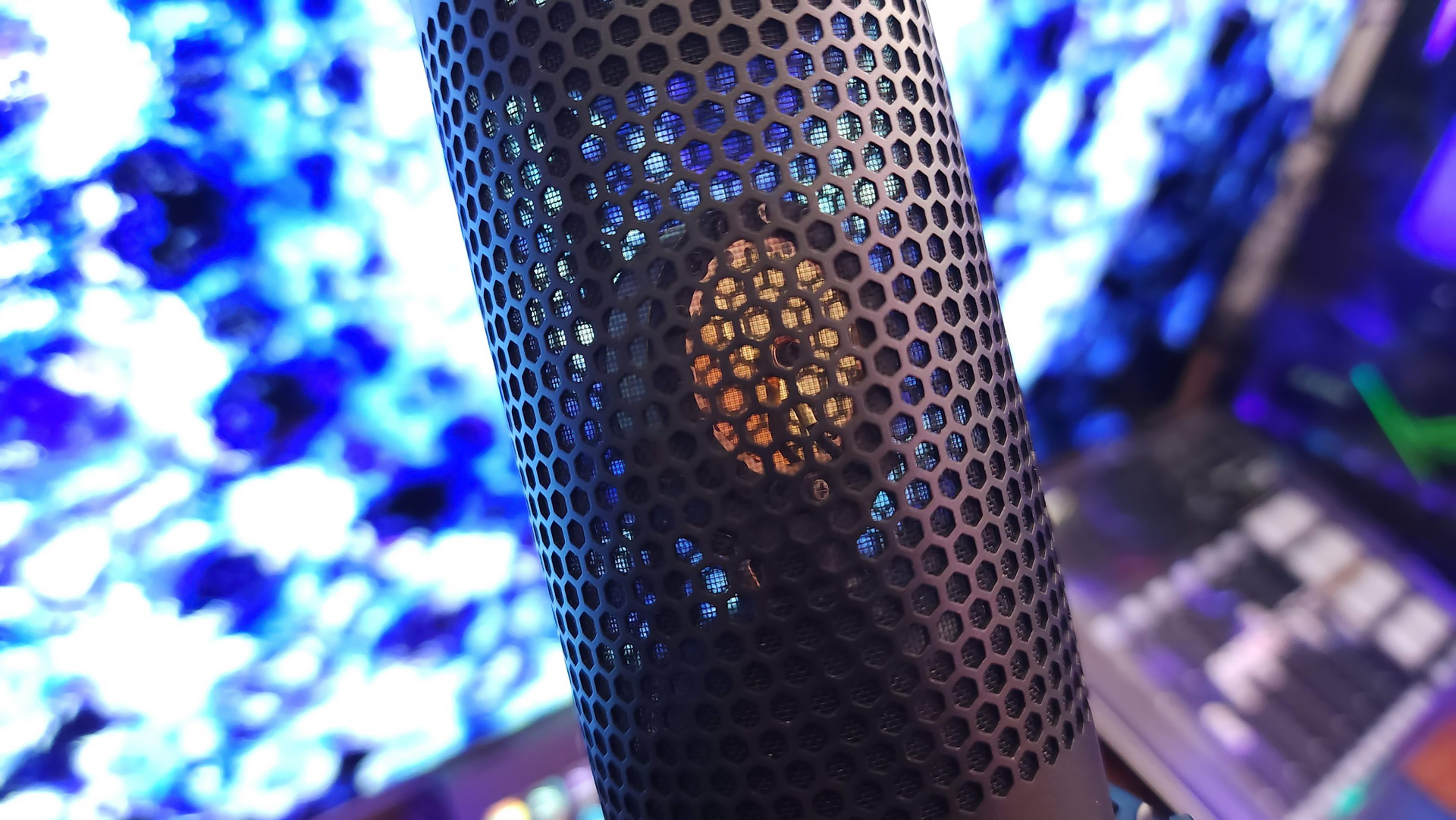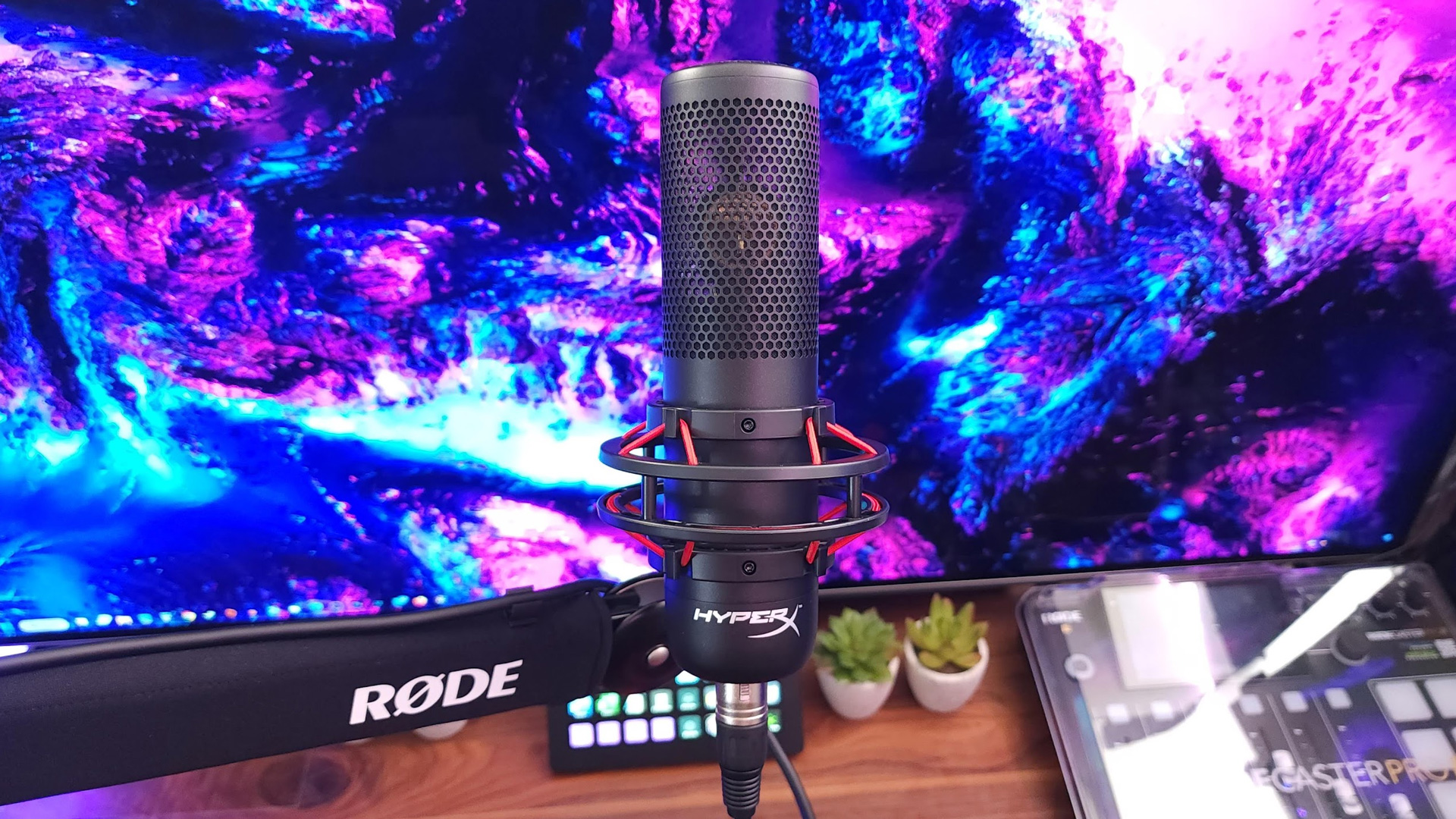Tom's Hardware Verdict
The HyperX ProCast is a good XLR microphone with a couple of nice features and included accessories but is much too expensive to make it a good choice against the competition.
Pros
- +
Sleek design
- +
Includes a pop filter and shock mount
- +
Offers pad and filter options
- +
Clear, natural sound quality
Cons
- -
Lightweight build quality
- -
Doesn’t include any kind of stand
- -
High asking price
Why you can trust Tom's Hardware
HyperX is no stranger to the world of gaming microphones. Its HyperX QuadCast currently holds the top spot on our list of the best gaming microphones, and has since released multiple iterations, like the QuadCast S and DuoCast. It was only a matter of time before HyperX tried its hand at an XLR microphone to target streamers and content creators clamoring for a more professional audio solution.
The time has finally arrived. I’ve spent the last two weeks with the XLR-powered HyperX ProCast, a side-address cardioid condenser microphone designed with more serious creators in mind. It features a rich, natural sound, sturdy build, a built-in high-pass filter and -10dB pad, and useful accessories like a shock mount and pop filter. It’s a decent microphone, but at $249 it’s much too expensive to actually recommend buying.
HyperX ProCast Specs
| Connectivity | XLR |
| Frequency Response | 20Hz - 20,000Hz |
| Microphone Type | Condenser |
| Polar Patterns | Cardioid |
| Sensitivity | -38 dbV/Pa |
| Maximum Input Sound Level | 140dB |
| Noise (RMS) | -118 dBV |
| Dynamic Range | 123dB |
| Signal-to-Noise Ratio | 75dB |
| Dimensions | 5.3 x 4.0 x 8.2 inches |
| Weight (in shock mount) | 0.83 pounds |
Design of the HyperX ProCast
The ProCast is immediately recognizable as a HyperX microphone. Like the QuadCast and QuadCast S, it features a tall, cylindrical design with a honeycomb grille that takes up most of its upper half. It lacks some of the visual pizazz of those microphones, lacking colored lighting (which isn’t possible over XLR) or much color outside of the red suspension bands on the shock mount. It’s a bit boring, honestly.
The mic feels sturdy in the hand thanks to its all-metal body, but it doesn’t feel like it could survive a fall. At 0.83 pounds (376 grams), it’s surprisingly light, and even with its metal cage, the capsule inside floats on a narrow stem that could easily get damaged from a good bang. It’s designed to go right on a stand (sold separately) and stay there.
You’re not likely to be doing gymnastics holding your XLR mic, so what really matters is the technology inside the chassis. The ProCast is a large diaphragm condenser mic. (The diaphragm is the circular disc mounted inside the grille that actually captures the sound). Large diaphragms are more expensive to manufacture but can also deliver better, richer recordings, which is exactly why they’re found in recording studios around the world. Side by side, the ProCast delivers a noticeably fuller sound than the small-diaphragm Blue Yeti, for example.
When it comes to specs, the capsule is able to capture the full range of human hearing: 20Hz to 20,000Hz. It’s quite quiet with a signal to noise ratio of 75dB and has a wide dynamic range of 123dB. The maximum sound input level is 140dB, loud enough where you’ll need earplugs to prevent hearing loss. The sensitivity is -38 dbV/Pa, however, which means it will pick up just about any surrounding noise in your room.
It uses a cardioid pick-up pattern and is built for side-address. That means you’ll be talking into its face versus the end of the cylinder like a traditional broadcast microphone. That polar pattern focuses pick-up directly in front of the mic, so sounds coming from the back and sides are quieter and sound thinner. It’s not a good fit for recording interviews or multiple hosts talking across a table, but is perfect for single-host podcasts and streaming to Twitch or YouTube.
Get Tom's Hardware's best news and in-depth reviews, straight to your inbox.
One of the benefits the ProCast offers is its very natural, true-to-life sound. To accomplish that, it’s tuned to be quite sensitive to surrounding noise. Your keyboard and noisey roommates won’t be as loud as your voice, but they’ll still be audible and make their way onto your stream or podcast. Most people won’t need to worry about sound treating your room with this mic, but if you have a lot of reflective surfaces or your recording space is naturally echoey, its reflections could still make their way into the mic.
Around the back of the microphone, HyperX has included a pair of switches that adjust the sound and sensitivity of the ProCast’s capsule. One switch acts as a -10dB “pad,” which is audio-speak for volume reduction. Turn it on and your loud source instantly comes through -10dB quieter.
The second switch enables an 80Hz high-pass filter, which cuts low frequencies below 80Hz. If you have a naturally deep voice, it helps to remove some of the extra boominess you may be experiencing. It can also help filter out any low droning sounds in the background, like an HVAC system, but it didn’t do anything for the fans on my PC.
At $249, it’s an expensive gaming microphone, but HyperX does increase value by providing a shock mount and pop filter right in the box. The shock mount is screwed directly to the microphone, but works pretty well at isolating the mic from minor vibrations and bumps. The pop filter is a simple metal mesh but also works quite well to block plosives.
The ProCast doesn’t come with any kind of stand like HyperX’s other microphones, so you’ll need to purchase one separately. The shock mount comes with 5/8-inch threading but doesn’t include a 5/8-to-3/8-inch adapter and may not work with all stands. Since most aftermarket mounts include one in the box, it shouldn’t be an issue, but you’ll definitely want to double check before ordering a desk stand or boom arm to make sure it will fit.
And, like all XLR microphones, you’ll need an audio interface in order to connect it to your PC. For my purposes, I used the Elgato Wave XLR but it also worked fine with my RodeCaster Pro 2 and Presonus Studio 26c. The mic requires 48V of phantom power to run but isn’t gain hungry, so even budget-friendly audio interfaces should work well with it.
Sound Quality on the HyperX ProCast
The sound on the ProCast is the star of the show. HyperX’s microphones have always impressed with their recording quality and that continues to be the case here. Over the two weeks I spent with it, I tested it with everything from isolated test recordings in Audacity, to gaming with friends, calls over Discord, virtual conference calls, and even recording acoustic guitar. The ProCast managed to sound good through all of it.
The large diaphragm did a great job of picking up on the lower frequencies in my voice. I don’t have a natural radio voice and often have to speak very close to it to get enough bass presence. Here, I was able to sit back a few inches and still have the same full, natural sound I need for recording work. When I did lean in, the microphone didn’t become boomy with too much proximity effect.
I was surprised to find that the high-pass filter had an audible effect on my voice without also making it sound thin. It cut out some of the lows but left the recording sounding a bit more “clean” instead of anemic.
The pad, on the other hand, I didn’t find much use for. In a normal recording setting for streaming, I just didn’t find much use for it. Simply adjusting the volume on my interface was enough and made the pad an unnecessary extra. It works: testing in Audacity made it clear. So, if you do want to mic a guitar cabinet or drum set, it’s a nice value-add.
I was also impressed by just how quiet the mic was. Setting my levels to capture my voice at a standard -12dB, there was hardly any audible noise coming through. That low noise floor makes it easier to hear tiny details and to create more true-to-life, high-resolution recordings.
What wasn’t so great is off-axis noise rejection. The cardioid pattern tries to isolate sounds coming from directly in front of the microphone (and a very small window behind it due to how the technology works). Sounds coming from the back and sides are thinner and a bit quieter but still come through very easily.
That design can be a good thing if you don’t want the mic directly in front of your mouth. For streaming, being a little off-position is common and the ProCast is forgiving of that. At the same time, every click of my mouse and clack of my keyboard made their way through into my recordings. The same was true of my case fans, especially when the CPU cooler would kick into high gear while benchmarking.
The ProCast is a great sounding microphone but it works best in very quiet environments.
Sound Sample for the HyperX ProCast
Have a listen to how it sounds below.
The HyperX ProCast doesn’t lose points for sound quality. There, like the original QuadCast, it impresses. The problem is that it’s just not good enough to justify its $249 cost of entry. At the current MSRP, it faces stiff competition from devices that also offer great recording quality, sometimes for much less.
The first mic that came to mind conducting this review was the Neat King Bee II. At $170, it offers even better sound quality, more robust construction, and a much more unique look. The Blue Spark SL is easily on par with the ProCast in sound quality, feels more premium, and costs $50 less. If you don’t mind swapping to a dynamic microphone (which is probably better for most home streamers anyway), the Shure MV7 is another excellent alternative that offers far more features: USB or XLR connectivity, touch controls, automatic gain sensing, app support, and much better noise rejection.
With all of that in mind, it’s not that the HyperX ProCast is bad, it’s just a bit bland, feels too light in the hand, and demands a premium because… well, I’m not exactly sure why. At $150 or even $180, this microphone would be worth considering. At $250, it’s just not.
MORE: Best PC Gaming Headsets
MORE: Best Gaming Keyboards
MORE: Best Gaming Mouse

Chris is a regular contributor for Tom’s Hardware, covering mechanical keyboards, peripherals, and content creation gear.
